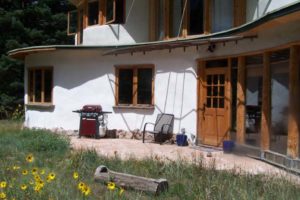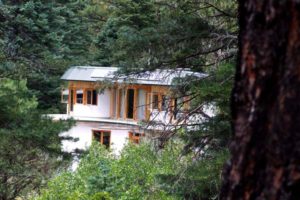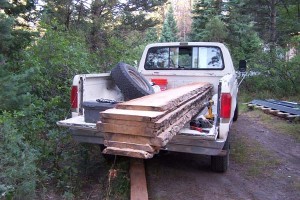Sustainability. The current, often used catch phrase. There are endless articles and videos explaining and defining the concept, so we will not add to the mass of information already available on the subject. We will however, provide a short list below of things to consider when attempting to incorporate into any project a more natural, healthy design and to walk lighter upon the earth. We believe any step taken is a good one – so review, consider and let us know if you have any questions on how to design your sustainable life.
Described below the check list is the story of how we created and defined our own home, a straw-bale hybrid.
Sustainable Check List:
- A Commitment to Buy Local Materials and use Local Vendors
- Buy Healthy Paints, Stains and Glues
- Build Small – Efficient Design
- Composting Waste Systems
- Efficient Food Production via Permaculture
- Efficient Fireplace and Solar Heating Sources
- Natural Building Wall Systems and Materials
- Passive Solar Structure Design
- PV’s – Photovoltaic Electricity
- A Solar Hot Water System
- Reduce, Reuse, Recycle, Re-purpose Materials
- Water Catchment and Grey Water – Usage Evaluation
Our hybrid home design has everything we desire in a home made of natural materials – beauty, organic flow and unique detailing. The materials we brought together were to maximize efficiency and comfort for living in this gorgeous place which can be extreme at times.
This 1,100 sq. ft. completely-off-the grid, passive-solar designed home features a straw bale shell, with cob, adobe, and light/straw interior walls and insulated floors downstairs to represent the most efficient home we could create. The home is performing beyond our expectations with heating and cooling. In the winter months we are only providing supplemental heat during cloudy days with our masonry stove, otherwise our radiant floor heat and passive solar design does the trick.
Our heating systems consists of a custom masonry stove designed by Norbert as our main heat source, with solar radiant heat in the adobe floors on the first floor. European radiators will be used for back-up on those rare days when we need an extra spot of warmth, but of this writing, we truthfully have not even hooked them up for use as we have yet to need them.
The solar hot water panels which heat our passive solar straw bale hybrid home.
For our energy needs, we incorporated recycled solar hot water collector panels and PV panels, an underground composting system using minimal water for waste, and water catchment from the large roof serving as our main water source.
We currently have 2 collection tanks which give us a total of 4100 gallons of water. Having to harvest our own water (we don’t have a well as of this writing), we are quite aware of our water usage and currently use 150-200 gallons a week for the two of us, well below the U.S. average of 100 gallons per person, per day.
In 2017 we updated our solar PV system from 5 panels to 12 – giving us 1.2 kW – up from .5 kW. Given we had plenty of energy for daily use with only 5 panels, having 12 panels feels like quite a luxury. We have such everyday things as a small washing machine, energy efficient vacuum, toaster and blender, a 1 gallon hot water tank in the kitchen, satellite and wireless. Thanks to new energy efficient refrigerators and lowering costs we were able to put our fridge on our new system (it uses only 2 panels), which is an upgrade we are thrilled with. We are living proof that a large array of PV panels which can be costly are not necessary if home inhabitants are simply mindful of usage – nor do they need cut back drastically with basic comforts.
Long term plans include a greenhouse and a garden and using our sun room to grow as much food at 8,000 feet as the elements will allow.
We harvested 95% of the clay and sand from the land and surrounding area for the earthen plasters and mud use overall, and began milling our own lumber in 2009, both of which reduced our carbon footprint dramatically. The timber milling has helped us a great deal toward managing our woods and the surrounding forest.
We worked to obtain elements for the home via barter, recycling and reusing such things as – our four inside doors, our kitchen and bathroom sinks, glass for our greenhouse (to come), a small fireplace and much more. Whenever on a job site we make an effort to reuse as many of old project materials for our own home as we can, and often move materials from one project to the next for our clients.
Building our own home was a slow process as we have often lost months and years helping create homes and spaces for others – but being a labor of love it was well worth taking our time.
We could not have created such a wonderful house if not for the many interns, helpers, friends and family who have come by to help and lend a strong back and hand. To each of them, we give thanks with deep, deep gratitude.
A tour of our home during building A tour of completed home-details









